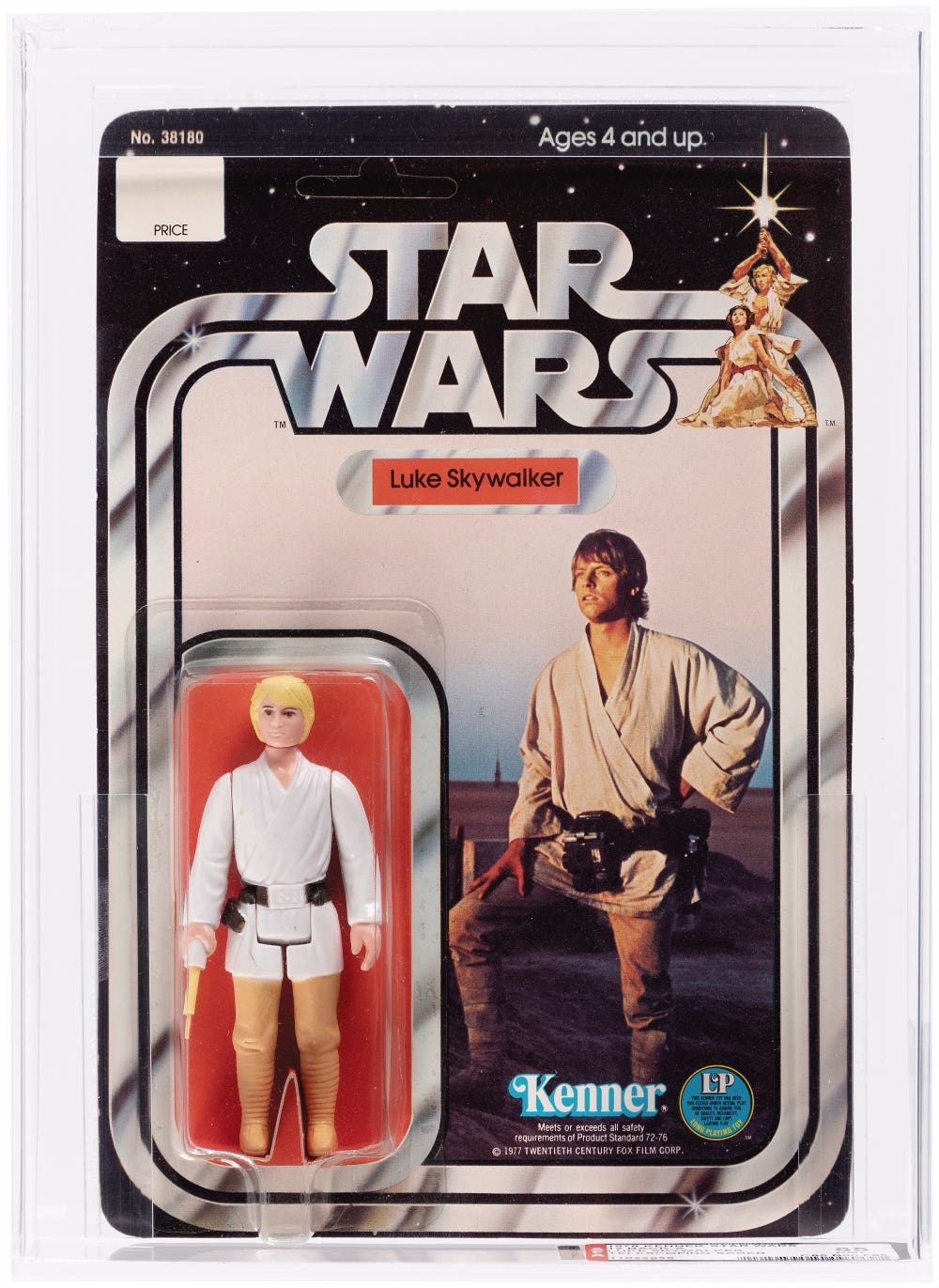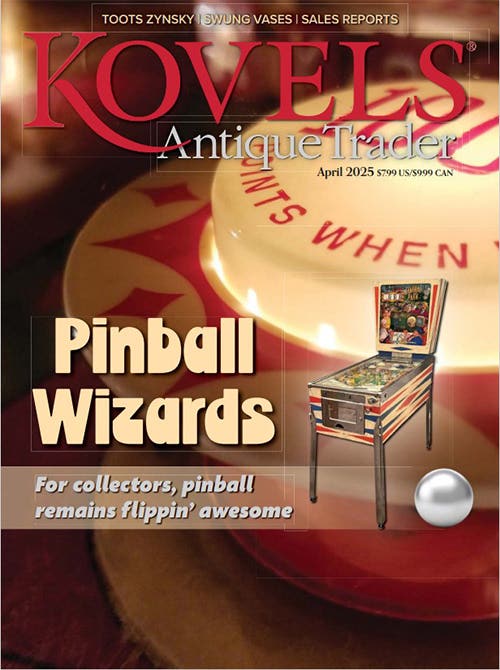Behind the Gavel: Rising in-store spending
Good news for storekeepers: Wayne Jordan evaluates the evidence of buyers shopping online, but buying in bricks-and-mortar stores, where they can touch, feel and try before they make their purchases.
It seems that eCommerce and Big Retail have finally learned what we antique dealers have known all along: Customers prefer to handle and inspect an item before they buy it.
For years, retail analysts have touted online selling as being the future of retailing. And in the board rooms of The Big Guys, decisions were made on the basis of that research. If research produced credible numbers, you see, then highly paid execs could point to the research as the basis for their decision-making. Boards of directors would then be happy and the execs could keep their jobs. “Show me the money!” say the directors. “Here it is!” say the execs, pointing to the research.
A recent report by TimeTrade Systems Inc., titled “The State of Retail 2015,” just brought all those boardrooms back to reality, though (or it should have). The report begins:
“TimeTrade recently conducted a survey of 1,029 consumers, which asked in-depth questions regarding their perceptions and behaviors around retail shopping. What the survey reveals is that the physical retail store is still relevant because more than ever, customers are looking to the in-store experience to help them validate their final purchasing decisions.”
“Still relevant?” I should say so. “More than ever?” Of course. Too many of us have been disappointed by our purchases from Amazon, eBay and other online marketplaces.
Responses to the TimeTrade survey show that:
• 87% of respondents plan to shop in bricks-and-mortar stores at least as often as they did last year
• 65% indicate that given a choice between buying an item online or at a nearby store, they would buy at the store
• 85% prefer in-store shopping to online shopping because they like to touch and feel products before they decide what to buy.
Duh. We knew that all along, didn’t we? Our boardroom is our retail store, where we get to talk with our customers, answer their questions and help them with their buying decisions. We report to no one but our customers.
Although online marketplaces continue to grow, they have not captured anywhere near the retail market share that pundits were predicting five years ago. Online spending in 2014 was about $200 billion, and is expected to more than double to $550 billion by 2020. Although $200 billion sounds like a lot of money, it represents only 18 percent of retail spending. Spending in bricks-and-mortar stores is expected to grow to almost $3 trillion in the next five years.
That’s good news for us bricks-and-mortar, Mom-and-Pop retailers. But our online mega-competitor Amazon just isn’t getting the message (which is also good news for us). Apparently, Amazon believes that what consumers want is a physical location to go to rather than a one-on-one experience with the product they are about to buy. In February of this year, Amazon opened its first store at Purdue University, with plans to expand onto college campuses across the nation. There is talk, too, of Amazon taking over the remaining Radio Shack stores that were not snapped up by Sprint in the Radio Shack bankruptcy. These stores will promote and sell Kindles and Amazon
services but they won’t stock and display a large variety of products. According to Paul Ryder, vice president of media and student programs at Amazon, Purdue students can order everything from “textbooks, laptops or mac and cheese.” So let me get this straight: They walk into the campus Amazon store, go to the desk and place their order online. When the item arrives at the store, the student gets an email saying that it has arrived, and they must go back to the store to pick it up.
How is that bricks-and-mortar retailing? Where is the comparison shopping? Where is the product contact? Why must it take two trips before a student can leave with their purchase?
Amazon has made this mistake before (and is still making it) with their Amazon Locker program. If you haven’t heard of Amazon Locker, here’s how it works: When you place an order online, you can choose to have it delivered to an “Amazon Locker” location in your city (usually located within a local business). I suppose a customer may sometimes not want a package delivered to their doorstep. Currently, these Lockers are only located in major metropolitan areas. Here in my little mountain town, we don’t have Amazon Lockers. We do have something similar, though: It’s called a “post office.”
We in the antiques business have come full circle: What was old is new again. Storefront retailers struggled to create an online presence; some succeeded, some did not. Apparently, giant Amazon with all their resources are having as much trouble creating a bricks-and-mortar presence as Mom-and-Pops once had creating an online presence.
What’s important to realize (and that the TimeTrade report points out in a round-about fashion) is that customers now differentiate between shopping and buying. It used to be that shopping (the art of looking) had to be done in stores, because that’s where the products were. That’s not the case anymore: Virtually every product sold in stores can be found online. Customers are now shopping online, but prefer to make their purchase in a store where they can touch, feel, try on and test-drive before they buy.
One of the questions asked in the TimeTrade survey was, “When helped by a knowledgeable associate, how likely are you to buy?” Fifty-one percent answered “extremely likely” and 39 percent answered “somewhat likely.” Only 10 percent of shoppers answered that it wouldn’t make a difference. Ninety percent of our customers are predisposed to buy from us when they enter our store, if they find the right product at the right price AND are assisted by a knowledgeable associate. Human interaction is what’s lacking in online purchases, and it’s the best tool we have to make sales.
In their 1987 book Marketing Warfare, authors Trout and Reis advanced a tactic called a “flanking move.” In a flanking move, a small retailer is able to compete with a big retailer by doing something that the big retailer can’t (or won’t) do. It’s clear that big online retailers can’t effectively run a bricks-and-mortar store, and it’s clear that they can’t give personal attention to all their customers. We can. Let’s use our strengths to advance our business sales.
Longtime columnist, writer, and author, Wayne Jordan is an antiques and collectibles expert, retired antique furniture and piano restorer, musician, shop owner, auctioneer, and appraiser. His passions are traveling and storytelling. He blogs at antiquestourism.com and brandbackstory.com.








